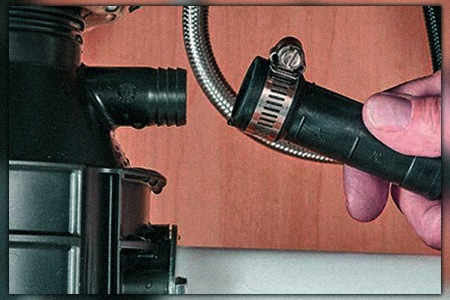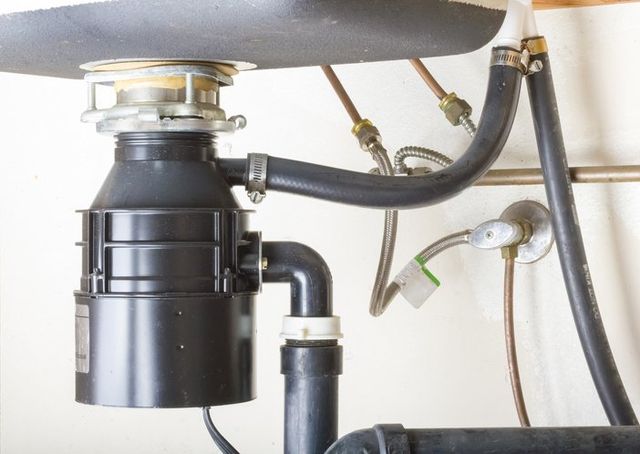Easy Steps to Stop a Leak in Your Garbage Disposal
Easy Steps to Stop a Leak in Your Garbage Disposal
Blog Article
Do you find yourself hunting for advice on Garbage Disposal Leaking From Bottom?

Garbage disposals are vital cooking area appliances that help in throwing away food waste successfully. However, a leaking garbage disposal can be a discouraging and unpleasant trouble to manage. Fortunately, numerous leakages can be taken care of conveniently with a couple of straightforward steps. In this article, we will go over just how to deal with a leaking garbage disposal effectively.
Introduction
Waste disposal unit are mounted under kitchen sinks and are created to shred food waste right into smaller items, allowing it to go through the pipes system conveniently. While these gadgets are normally trusted, leaks can occur in time due to damage, loosened connections, or damage to the unit.
Common Causes of Leaks in Garbage Disposals
Worn Seals and Gaskets
Seals and gaskets play a vital function in protecting against water from leaking out of the garbage disposal. Over time, these components can degrade, resulting in leaks around the disposal device.
Loose Connections
The links between the garbage disposal and the plumbing system can become loosened gradually, triggering water to leak out during procedure.
Splits or Openings in the Disposal Device
Physical damage to the garbage disposal, such as splits or holes in the real estate, can additionally cause leaks.
Recognizing the Resource of the Leakage
Before attempting to repair a leaking waste disposal unit, it is vital to recognize the source of the leak. This can generally be done via visual inspection or by conducting simple examinations.
Visual Assessment
Examine the garbage disposal unit very carefully for any kind of indications of water leak. Pay very close attention to areas around seals, gaskets, and link points.
Examining for Leaks
One means to check for leaks is by running water via the disposal unit and checking for any kind of visible indicators of leakage.
Devices and Materials Needed for Dealing With a Leaking Garbage Disposal
Prior to starting the repair service process, gather the needed tools and materials, including a screwdriver, flexible wrench, plumbing professional's putty, replacement seals or gaskets, and epoxy or patching material for fixing fractures or openings.
Step-by-Step Guide to Dealing With a Leaking Waste Disposal Unit
Shut off the Power
Before trying any repair services, make certain that the power to the garbage disposal device is shut off to prevent the danger of electric shock.
Situate the Leak
Determine the specific location of the leak and establish the cause.
Tighten up Links
Use a wrench to tighten up any loosened connections in between the disposal system and the plumbing system.
Change Seals or Gaskets
If the leak results from used seals or gaskets, eliminate the old components and change them with new ones.
Patching Splits or Holes
For fractures or openings in the disposal device, usage epoxy or a suitable patching material to seal the damaged location.
Testing the Garbage Disposal After Repair Service
As soon as the repair is total, examine the garbage disposal by running water with it to make sure that the leakage has actually been fixed.
Preventive Upkeep Tips to Prevent Future Leakages
To stop future leakages, it is vital to perform regular maintenance on your garbage disposal. This includes keeping it clean, avoiding putting non-food items or hard objects down the disposal, and regularly checking for leaks or other issues.
Conclusion
In conclusion, repairing a leaking garbage disposal is a relatively straightforward procedure that can be finished with standard devices and materials. By complying with the steps outlined in this short article and practicing preventive upkeep, you can maintain your waste disposal unit in good working problem and prevent costly repairs in the future.
What to Do About a Leaking Garbage Disposal
A leaking garbage disposal often goes unnoticed until you confront a sopping cabinet, a foul-smelling puddle, or an audible drip-drip-drip from the unit. The fix can be frustrating, too, because the leak can stem from a number of components in the system. Fortunately, with a little sleuthing, you can zero in on the leak and—depending on the exact location—stop the icky oozing and repair the component that caused it. Worst case scenario, if it turns out that the garbage disposal must be replaced, installing a new one is a reasonable do-it-yourself task for those with basic plumbing skills. Read on to keep the cash you’d otherwise hand over to a pro.
Prepare to find the leak
Prior to testing the garbage disposal for leaks, unplug it at the wall outlet and turn off the power from the breaker box to prevent electrical shock. Then insert a watertight sink stopper into your sink drain and wipe the unit dry with a clean cloth. In any handy container, mix a few drops of food coloring into a few cups of water, and pour the dyed water onto the sink stopper to help you locate the leak.
Investigate the source
the top, where the disposal meets the sink drain the side, where the dishwasher hose or main drain pipe connects to the disposal or the bottom of the unit Inspect each of these locations while gliding a light-colored rag over the unit; the dyed water will readily show on the rag and reveal the location of the leak. If a leak isn’t immediately apparent, remove the sink stopper and pour a few more cups of dyed water down the sink drain, then check for leaks again. Leaks near the top of the unit are more likely to show themselves while the sink is plugged, while side and bottom leaks are more noticeable while the sink is unplugged.
The metal sink flange that sits directly inside the sink drain is typically sealed around the top with plumber’s putty (a clay-like sealant) and then secured from under the sink with bolts. If the plumber’s putty deteriorates, or the bolts loosen, the flange can no longer form a watertight seal between the sink drain and the disposal—which could cause a leak at the top of the unit.
To reseal the leaky flange, you must first detach the garbage disposal. Start by loosening the screws securing the main drain pipe to the disposal, then loosen the screws in the metal clamp securing the dishwasher hose to the disposal and detach the drain pipe and dishwasher hose from the disposal. Loosen the screws in the mounting ring that connects the disposal to the metal mounting assembly beneath the sink, then pull down the disposal and carefully set it on a clean, dry surface. Loosen the bolts in the mounting assembly with a wrench, then pull down the mounting assembly and set it near the disposal.

Do you appreciate reading about How to fix a pretty consistent leak from my garbage disposal? Leave a remark down below. We'd be glad to hear your responses about this write-up. We hope that you come back again later on. Sharing is nice. You just don't know, you could be helping someone out. I take joy in reading our article about Why Is My Garbage Disposal Leaking From the Bottom?.
Request Estimate Report this page